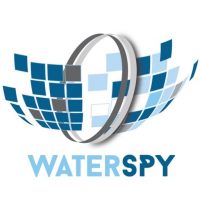WaterSpy – reinventing water quality analysis
Freshwater is a finite resource essential to agriculture, industry and basic human existence. Water pollution and wasteful use of freshwater threaten life itself. In a water distribution network, hazardous contaminants can be introduced into the system by intentional sabotage, illegal disposal of wastewater, terrorist attack, accident or due to naturally occurring incidences (such as negative pressure siphoning contaminated water into broken pipes, network backwash, erosion of chromium rich soil, etc.).
Quick and reliable water quality monitoring data is critical for detecting environmental pollutionand reacting in the best possible wayto avoid human health hazards. However, it’s not easy to gather such data, at least not for all contaminants. Currently, water utilities rely heavily on frequent sampling and laboratory analysis in order to acquire this information. This method is time-consuming, expensive, and usually does not provide the necessary immediate input on notifying authorities in order to proceed to necessary measures, once hazardous contaminants are detected.
For thesituation to be improved, compact, portable and high-performance devices for pervasive water quality monitoring are required. Such devices should expand current limitations in detecting contaminants, transcending today’s paradigms, and bridging different technologies available, allowing on-line monitoring of possible contaminants.
The WaterSpy project addresses this challenge by developing water quality analysis photonics technology suitable for inline, field measurements. WaterSpy technology will be integrated, for validation purposes, to a commercially successful water quality monitoring platform, in the form of a portable device add-on. WaterSpy will be used in the field for the analysis of critical points of water distribution networks. This will be demonstrated in two different demo sites in Italy:
- Prato water treatment plant: The Prato plant serves the city of Genova (Italy), which has approximately 580.000 inhabitants. The plant has an average flow rate of about 80.000 L/min. It receives raw water from two different sources: the Brugneto Reservoir and the Bisagno River.
- Genova water distribution network: The second validation site will be the entry point to the water distribution network of Genova, just downhill the Prato water treatment plant. In this way, it will be possible to evaluate also the efficiency of the water treatment train of the plant.
The WaterSpy project is funded by Horizon 2020, the EU Framework Programme for Research and Innovation for 2014-2020 and is an initiative of the Photonics Public Private Partnership (www.photonics21.org). The WaterSpy project consortium includes 9 partners from 7 different European countries, coordinated by CyRIC, Cyprus Research and Innovation Center Ltd. The project was launched in November 2016 and will run for three years, to allow enough time for the development and real-world validation of the technology.
WaterSpy is taking advantage of advances in cutting edge photonic devices, in order to provide new capabilities in water analysis.The aim of the WaterSpy team is to develop a device that will require about 30-45 minutesfor a full water sample analysis of 250 mL. This is in line with the EC and national regulations that require that no bacteria should be present in a sample of 250mL of drinkable water. The 30-45 minutes will allow to perform 32-48 tests per day in the same site. With currently used systems, the same analysis could take up to 3 days.
More information about the project and the partners can be found on our website: www.WaterSpy.eu.
